Dell XPS 13 Review
by Brett Howse on February 19, 2015 9:00 AM EST- Posted in
- Laptops
- Dell
- Ultrabook
- Broadwell-U
- XPS 13
Gaming Performance
Normally on an Ultrabook we would not dedicate an entire page to gaming performance, because the integrated GPUs do not perform very well on our gaming tests. However, with this being our first example of Broadwell-U, it is a good time to revisit this and see how the new graphics capabilities of Broadwell compare to the Haswell processors.
With the Core i5-5200U in both of the XPS 13s that we received, we have 24 execution units, compared to only 20 on Haswell-U. In addition, the 14nm process should help with throttling. The FHD model (1920x1080) arrived with a two 2GB memory modules and the QHD+ version came with 2 x 4GB.
First, let's look at the synthetic benchmarks, starting with 3DMark and then moving on to GFXBench.
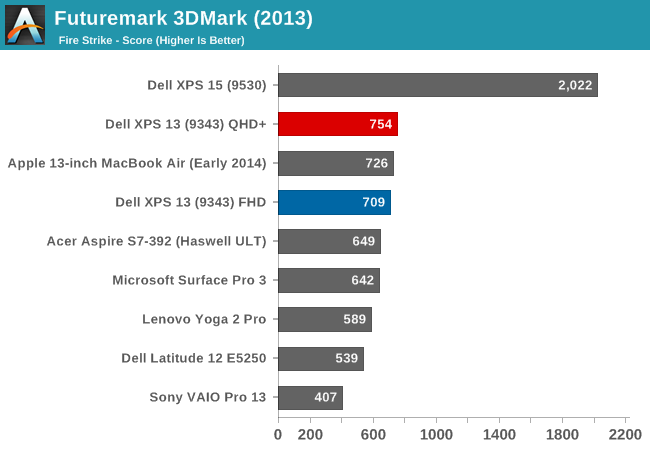
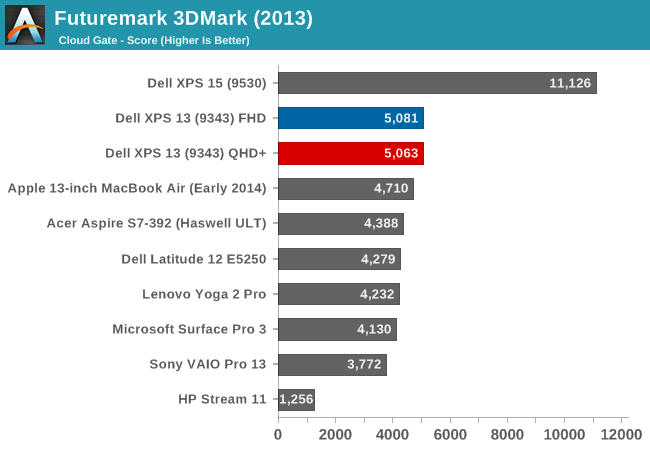
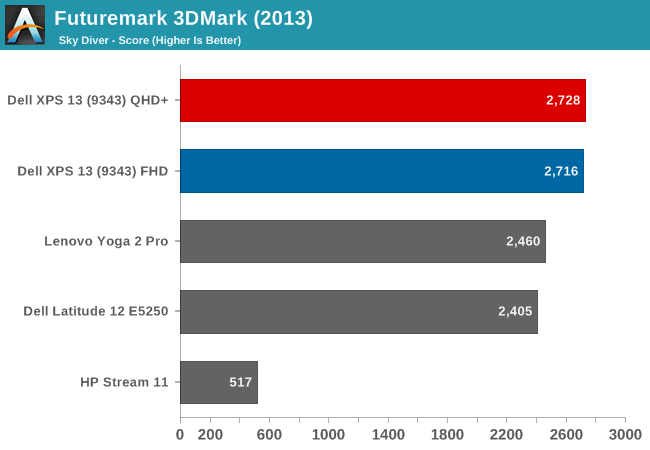

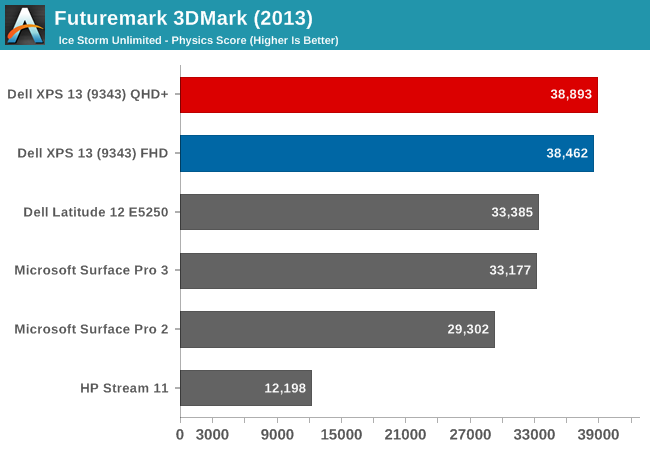
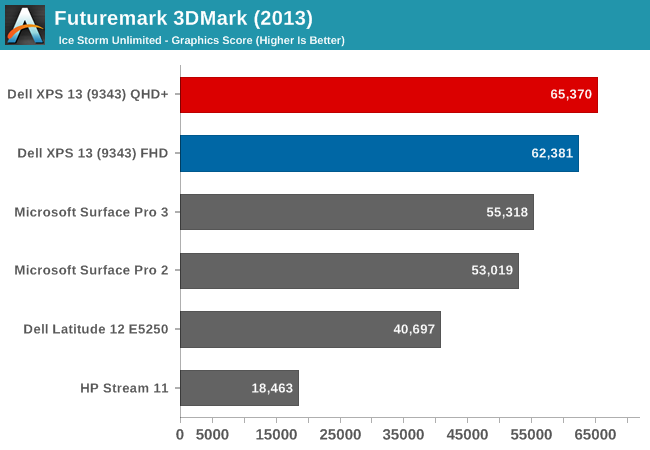
The 3DMark results begin to show the increased GPU performance of the Gen8 graphics. Broadwell-U outperforms all of the Haswell-U parts on all of the tests, and the QHD+ model gave a fraction more performance as well in a few tests.

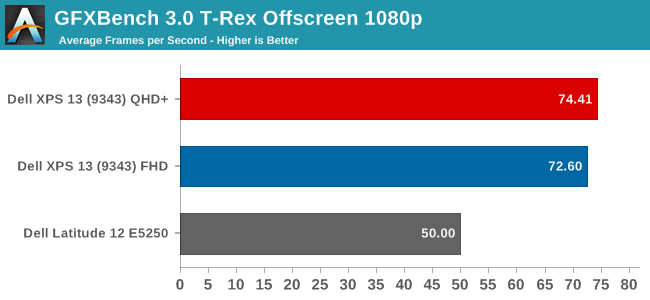

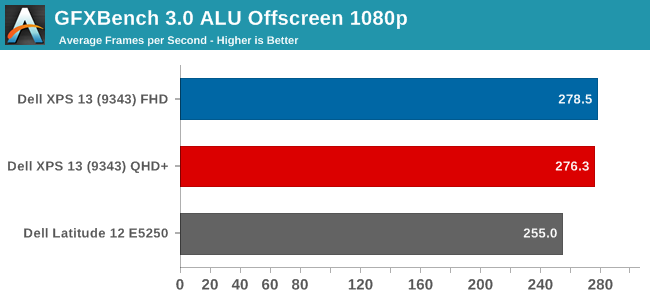
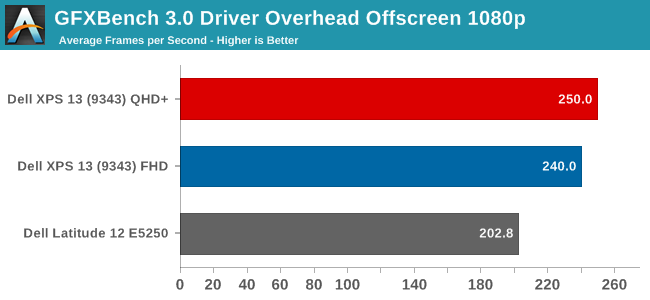
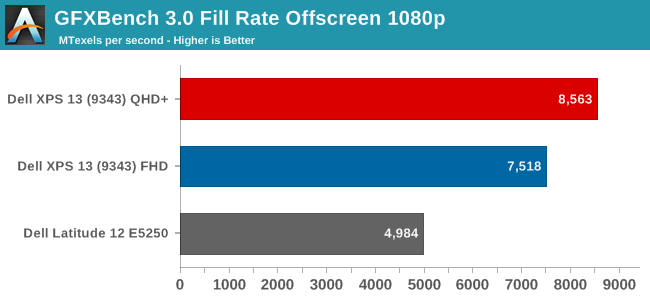
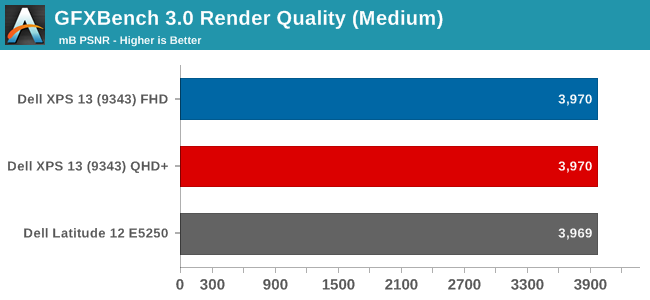
The initial results for the new GPU look pretty good, with the new GPU soundly beating the Haswell-U parts. The HP Stream 11, with just 4 EUs, trails quite far behind. GFXBench is one of our newer benchmark choices for Windows 8, and we will add more data as we get a few more devices to test.
Next, let's look at our gaming benchmarks. Due to the low performance of the integrated GPUs, I just ran our gaming tests at the Value (1366x768 ~Medium) settings.

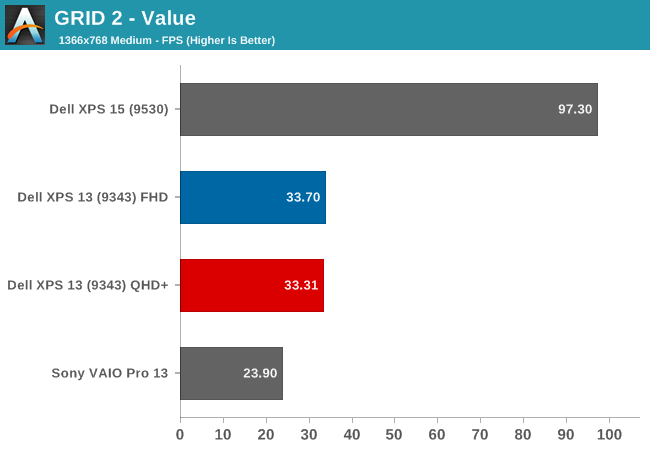

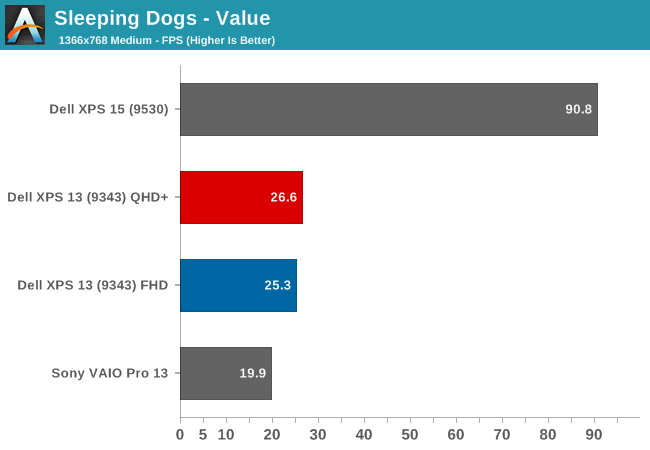
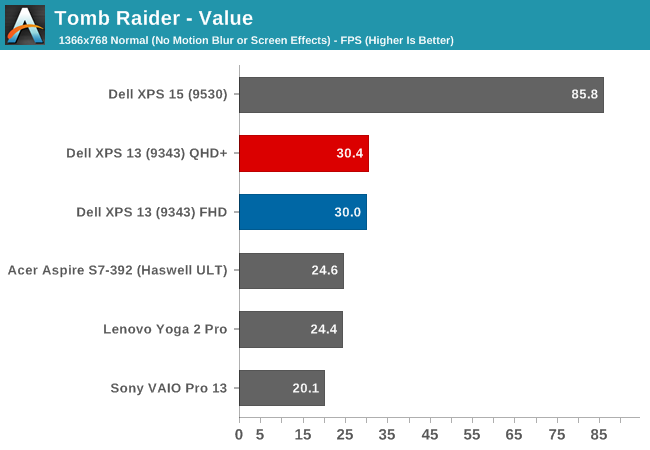
Here we can see once again that the new GPU is certainly stronger, but it is still not quite enough to make any of these games very playable on our Value settings. The Dell XPS 15, with its discrete GPU, carries a huge lead over the integrated GPU offerings. Still, the new Gen8 Graphics with more execution units per processor, as well as a change to the architecture of each execution unit, has made a healthy improvement. The new GPU has only eight EUs per sub-slice now, as compared to ten in Haswell-U, which help in many workloads. Ian has a nice writeup on the changes.
However, our gaming benchmarks are not tested at the lowest possible settings. All of the benchmarks start at 1366x768 with medium settings, so let's drop down another notch.
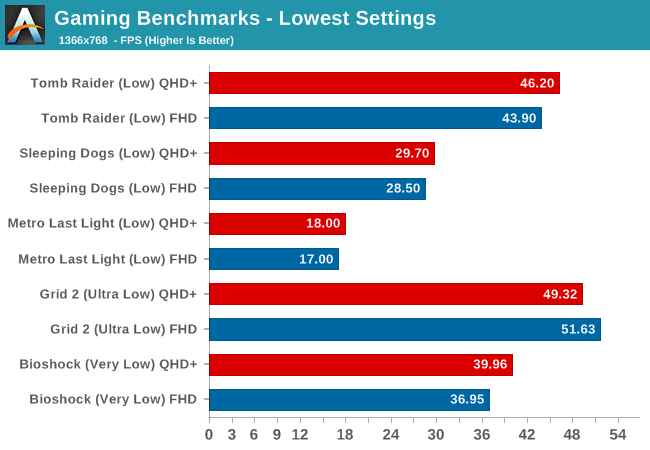
By setting the games to their lowest settings, some of them are now playable. We are still a long ways off of the performance of a discrete GPU, but slowly integrated graphics are improving.
Finally, we have a new gaming benchmark to add to our repertoire. Anand first used the DOTA 2 bench for the Surface Pro 3 review and it will be our go-to benchmark for devices like this without a discrete GPU. Our Value setting will be 1366x768 with all options off, low quality shadows, and medium textures. Midrange will be 1600x900 with all options enabled, medium shadows, and medium textures, and Enthusiast will be 1920x1080 with all options maxed out.
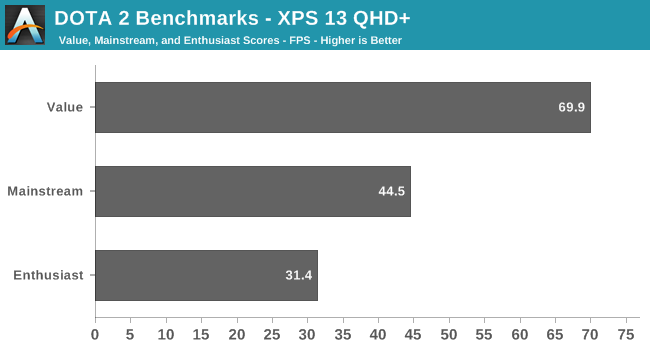
We do not have any other comparison points at the moment, but it is very clear that a game like DOTA 2 is very playable on a device with an integrated GPU. Frame rates, even with good settings, are very reasonable.
So Broadwell has raised the stakes again, but the end result is Intel's Integrated GPU is still not going to let you play AAA titles with good frame rates. Hopefully we can get some good comparisons between Broadwell-U and the AMD APUs in the near future. It will also be interesting to see what happens on the higher wattage Broadwell parts, some of which will contain significantly more EUs.










201 Comments
View All Comments
Wineohe - Thursday, February 19, 2015 - link
I see reviews of laptops with decent IPS displays but then when I actually try to purchase them they don't seem to exist. They seem to offer them for a time, and then they don't. I used a small XPS and now a Lenovo X220, both with IPS for my photography work(amateur), but I've been starting to look for a replacement. The X220 is really toooo small for my aging eyes. This looks perfect and frankly I don't think the price is that bad. My last two were in the 2k range. However the inability to calibrate is a non starter with me. They have to sort that out.Shadowmaster625 - Thursday, February 19, 2015 - link
Can you add DOTA2 battery life. I'm guessing even this notebook would struggle to deliver 3 hours of DOTA/LOL but it would be nice to know for sure.Jeff7181 - Thursday, February 19, 2015 - link
After my experience with the XPS12 and Dell's support, I wouldn't touch this thing with a 10 foot pole. My XPS12 is just plain broken and Dell won't do anything for me except keep sending me a box to ship it to their depot, where they do nothing but reinstall the OS, verify it boots and send it back. Extremely disappointed.peterfares - Thursday, February 19, 2015 - link
If you've had it serviced multiple times and are still in warranty insist on having the unit replaced. I had a first gen XPS 12 that Dell replaced with a 2nd gen XPS 12 last year (and got upgraded from a 256GB SSD to 512GB)VengenceIsMineX - Thursday, February 19, 2015 - link
I'm very curious about the auto brightness issue. That is a Windows control in the detailed power settings not something that is usually manufacturer specific, did turning Display>Enable Adaptive Brightness off not work?Also, just for clarity, was this a version straight from Dell with their usual bloat or a clean software image like what Microsoft sells in their stores? Seeing some wildly varying reviews on battery life, for example the Verge ragged the battery as being 6 hours in normal usage which is obviously not what you are seeing and I'm curious about possible reasons.
Drumsticks - Thursday, February 19, 2015 - link
For starters the Verge places the brightness at like 70% during their battery tests, which is going to seriously penalize this display. Basically, their reviews aren't exactly scientific. (The reviewer even mentioned how like 30% brightness was enough for him).Ryan Smith - Thursday, February 19, 2015 - link
"did turning Display>Enable Adaptive Brightness off not work?"Correct. It is not possible to turn off adaptive brightness at the moment.
Brett Howse - Thursday, February 19, 2015 - link
I'm not sure what other sites do for testing, but we try to be as consistent as possible. The laptops are put in power saving mode, the display is put at as close to 200 nits as possible, and we use IE to test for battery life. All of our tests are repeated multiple times. All I can say is that I checked this a couple of times, and with the asterisk that Dell has enabled adaptive brightness with no way to disable it, the results were consistent across the runs.VengenceIsMineX - Thursday, February 19, 2015 - link
If you really wanted a big SSD on the FHD model, it is pretty cheap to just buy it with the 128 gb hd and install your own 512GB even with it being m2. 512GB SATA 3 Transcend on Amazon is now just over $200, PCIe at roughly twice that. Given OEM's tendency to gouge on storage (at least not as bad as Apple which is just outrageous) it's the better way to go and even with drive copying and screwdriver work it's a 30 minute operation.repoman27 - Thursday, February 19, 2015 - link
If you're comparing the prices of the cheapest SSDs you can find on Amazon or Newegg to CTO options from a major OEM, there's obviously going to be a difference. What makes Apple's pricing "gouging"? 256 GB SSD options generally run $200 extra compared to 128 GB, or $500 extra for 512 GB. Do you have a cheaper source for Samsung XP951 based PCIe 2.0 x4 SSDs using MLC NAND?